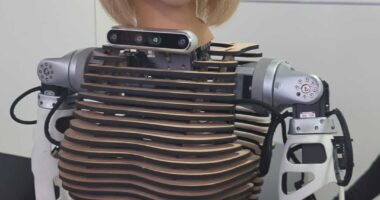
Using computer algorithms and an X-ray scanner designed for dental research, an international team of researchers has unlocked the secrets of a tightly folded letter sealed since 1697—without opening it.
The “virtual unfolding” of the letter—the culmination of a four-year project described in a paper published Tuesday in the journal Nature Communications—points to a new line of historical research into the centuries-old practice of letterlocking. That’s the term used to describe the use of origami-like folds to hide the content of letters before envelopes came into wide use in the mid-1800s.
“This is a dream come true in the field of conservation,” said Jana Dambrogio, the conservator at the research library at the Massachusetts Institute of Technology and one of 11 authors of the paper.
Experts say the technique used to reveal the text of the letter, which includes a type of imaging called X-ray microtomography, could also have applications in healthcare and engineering.
Letterlocks varied in complexity depending upon the expertise of the sender and receiver and how tamper-evident they wished their messages to be during transit. Some involved dozens of folds, resulting in packets about the size of playing cards.









